Ford hits the street, drag strips, and the high-speed ovals with a slick new ’61 FORD SHOWROOM SUPERCAR, and the most powerful single-four-barrel and tri-power big-blocks yet.
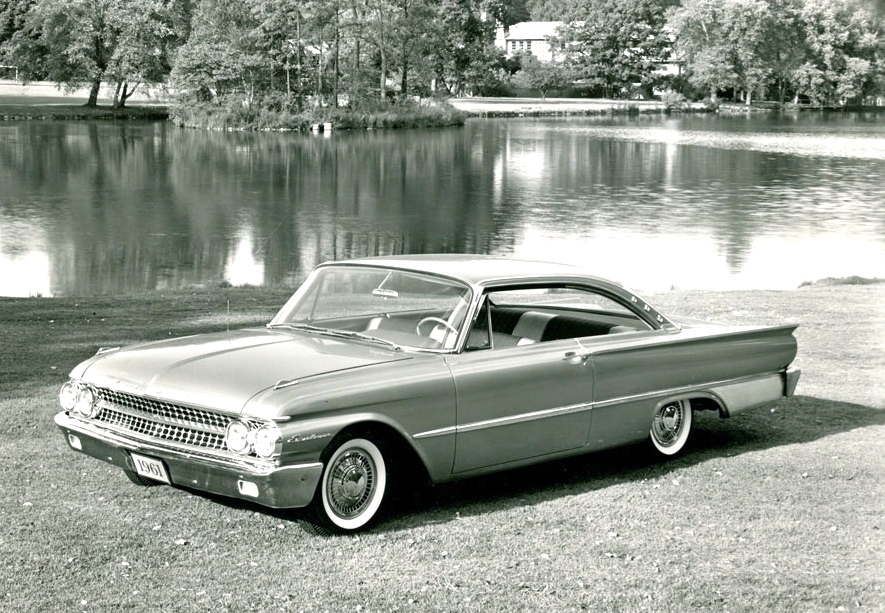
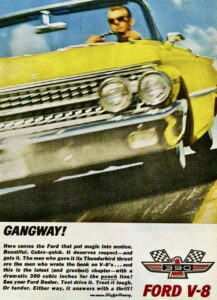
By 1961, Henry Ford was coming under pressure internally as well as from dealers to pull out of the restrictive 1957 Automobile Manufacturers Association’s racing ban. Most of Ford’s racing activities, like those at Chrysler and General Motors, were being run out of Dearborn’s “back door,” and successes on the racetrack were not being used to bolster new car sales. That would all change in June of 1962 when Henry Ford announced that he was no longer supporting what had come to be a “wink-wink” ban.
However, high-performance powertrain development and racing support were alive and well at Ford in 1961. A champion of the cause was Dale Evans, who headed up covert racing efforts and worked with engineers Charlie Gray, John Cowley, Don Sullivan, and Don Wahrman. They interfaced with NASCAR-USAC teams, drag racers, and dealers who supported racing.
New for 1961 was a stunning Starliner fastback coupe that could be ordered with a new optional $109.00 performance package. This included an FE-series big-block engine displacing 390 cubic inches and rated at 375 horsepower at 6,000 rpm. With single four-barrel carburetion, high-compression, solid lifters, and a three-speed stick, the ’61 FORD SHOWROOM SUPERCAR delivered outstanding performance. Four-speed transmissions came later in the model year and were often dealer-installed on earlier cars along with factory tri-power induction.
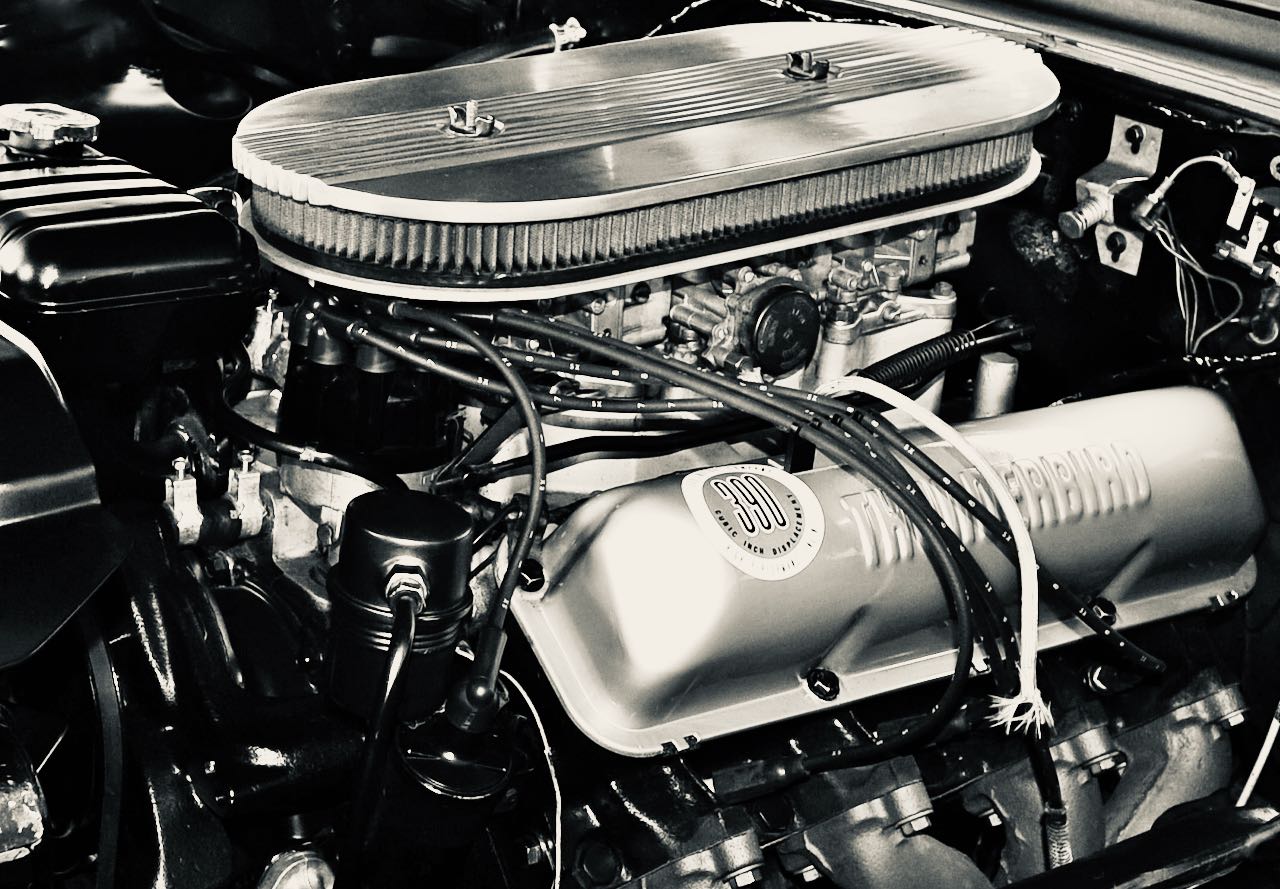 Tri-power packages were available at Ford dealers for $260 plus installation. This addition with three Holley two-barrel carburetors could increase quarter-mile speeds by three-four mph and lower elapsed times by up to one-half second, and the horsepower increased to 401 at 6,000 rpm. The 390 big-block, bored to 4.05 inches with a 3.78-inch crank, was the latest iteration of the 332-352-inch FE engines introduced in 1958 Fords.
Tri-power packages were available at Ford dealers for $260 plus installation. This addition with three Holley two-barrel carburetors could increase quarter-mile speeds by three-four mph and lower elapsed times by up to one-half second, and the horsepower increased to 401 at 6,000 rpm. The 390 big-block, bored to 4.05 inches with a 3.78-inch crank, was the latest iteration of the 332-352-inch FE engines introduced in 1958 Fords.
Ford offered the same performance options on base-model two and four-door Fairlane and Galaxie sedans, which traded in the Starliner’s slippery aerodynamics for an inconspicuous boxy look. Stock car racers ordered Starliner coupes for obvious reasons, and, surprisingly, the general public never warmed up to its thin roof pillar fastback styling. In 1961, sales of the traditional Galaxie Victoria coupes hit 75,437 units, while Starliner sales languished at under 30,000. The Starliner was not back in the lineup in 1962, causing grief for NASCAR-USAC racers who relied on its aerodynamic benefits on the Super Speedways.
Ford was determined that the high-performance 390 engine would be ordered only by serious enthusiasts. You could not get the 390/375 engine in a station wagon or with automatic transmission, power steering, or brakes. What you did get was heavy-duty everything: larger brakes, special driveshaft, big rear, beefy suspension, and a wide choice of final drive ratios.
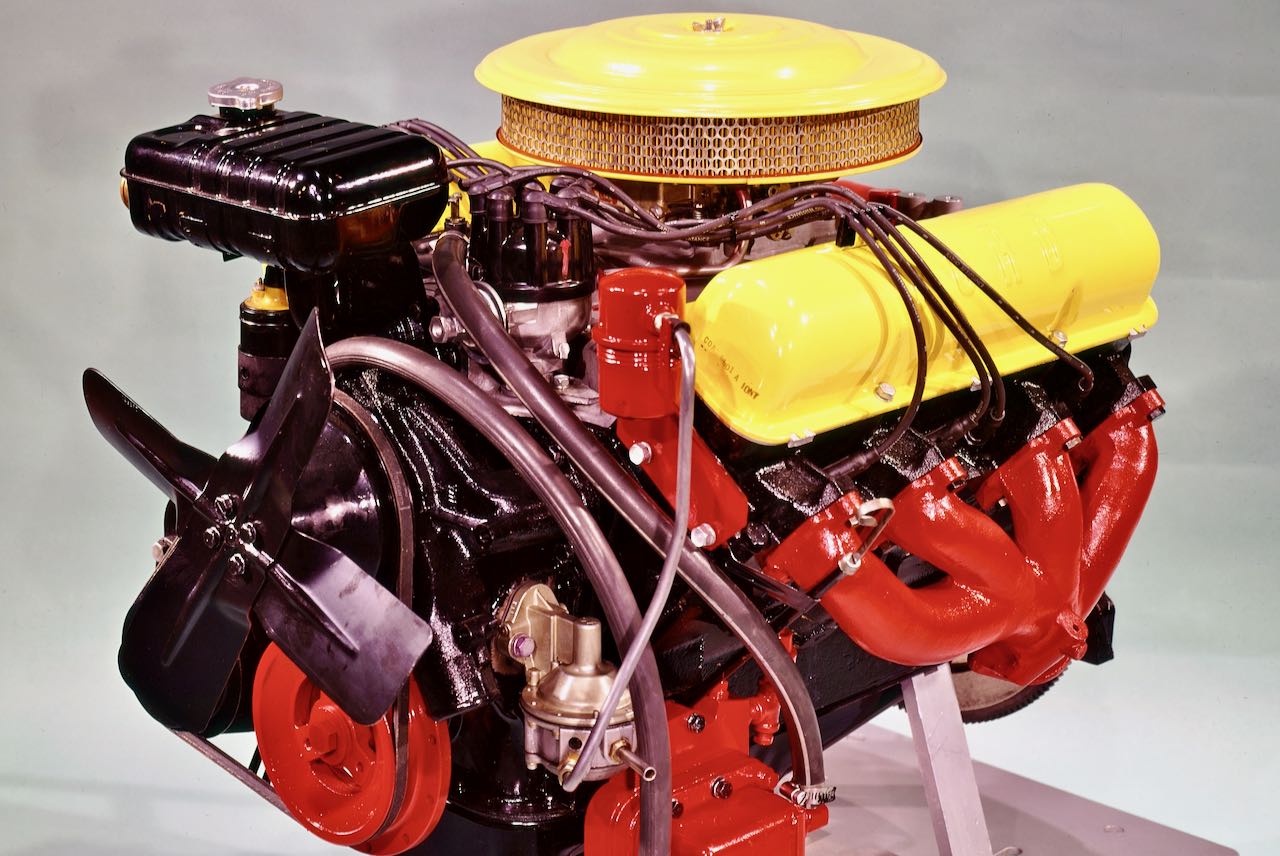 All HP 390 engines came with special blocks with beefed lower ends, larger oiling passages, magnafluxed cranks, pistons, and rods, plus high-rpm valve trains. Heads were factory machined for 10.6 to 11.0-to1 compression. Stock exhaust manifolds were cast iron, tuned like custom tube headers, and similar to those used on the 300-horsepower 352 Special engines, above, Ford released for racing in 1960. Dealers having a high-performance customer base stocked rear end gearsets ranging from 3.10 to 5.83-to-1, tri-power manifolds and Holley carburetors, and Borg-Warner four-speeds.
All HP 390 engines came with special blocks with beefed lower ends, larger oiling passages, magnafluxed cranks, pistons, and rods, plus high-rpm valve trains. Heads were factory machined for 10.6 to 11.0-to1 compression. Stock exhaust manifolds were cast iron, tuned like custom tube headers, and similar to those used on the 300-horsepower 352 Special engines, above, Ford released for racing in 1960. Dealers having a high-performance customer base stocked rear end gearsets ranging from 3.10 to 5.83-to-1, tri-power manifolds and Holley carburetors, and Borg-Warner four-speeds.
There was one special-order 390 four-barrel engine that did not appear in the salesman’s customer order book. It was called the 330-horsepower Interceptor and, like the 375-horsepower engine, had the “good” block, solid-lifter valve train, high-lift camshaft, and header-style exhaust manifolds. You could even order it with an automatic transmission in any style body, including a station wagon. The only catch was that it was listed in the Fleet & Police guide with orders restricted to law enforcement agencies!
Mid-year, Ford announced factory installation of four-speed transmissions and received NHRA approval for running in A/Stock and Super/Stock classes at the 1961 NHRA Nationals in Indianapolis over the Labor Day weekend. Prepared NHRA S/S 401-horsepower tri-power Starliners consistently ran trap speeds of 103-105 mph in mid-13s.
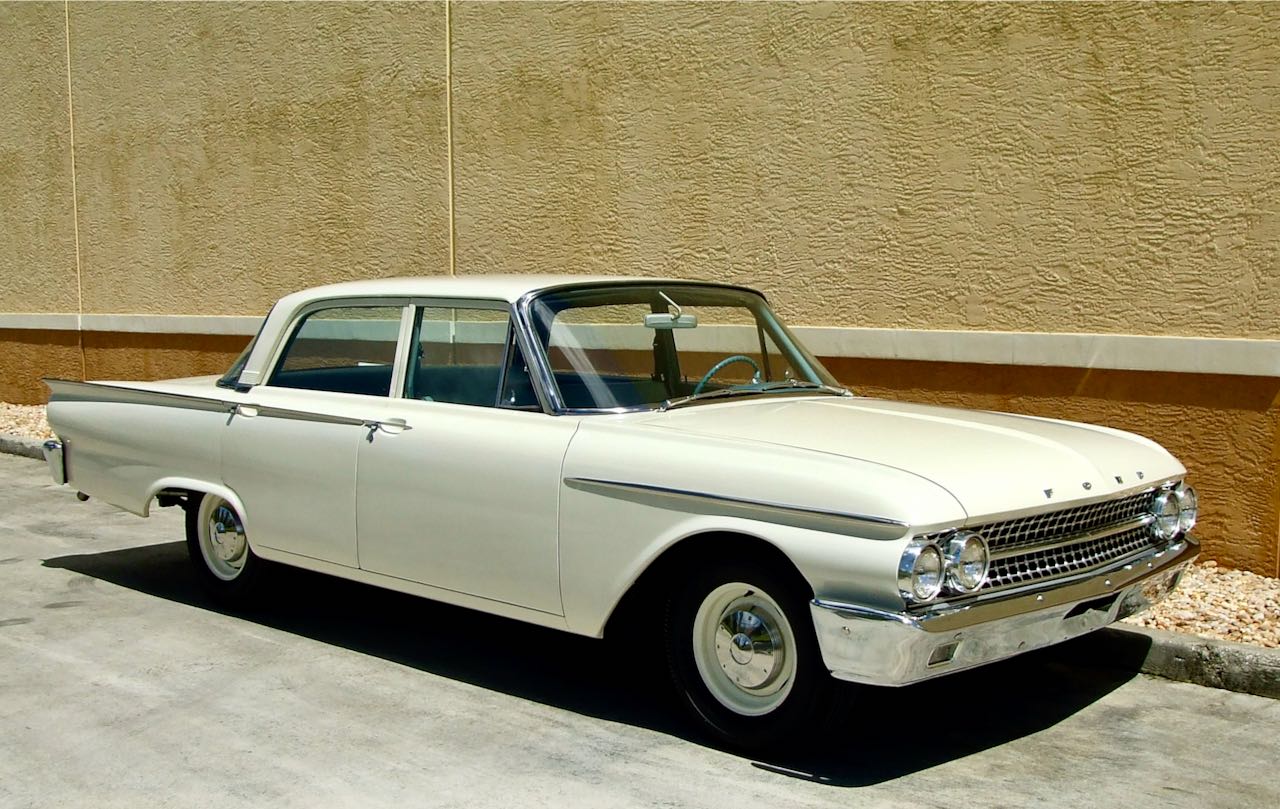 Ford test driver Len Richter was very competitive with a ’61 Galaxie two-door base model 302 sedan fitted with dealer-installed Borg-Warner T-10 four-speed. He ordered his ’61 FORD SHOWROOM SUPERCAR with radio delete and light rubber mats in place of carpeting. While Richter preferred the “plain pipe rack” sedan, popular drag racers like Phil Bonner, Dick Brannan, Les Ritchey, and others who had dealership-sponsor contracts went the high-profile Starliner route. John Vermeersch and Bill Pearson campaigned an A/Stock 390-inch Starliner well into the 1962 season.
Ford test driver Len Richter was very competitive with a ’61 Galaxie two-door base model 302 sedan fitted with dealer-installed Borg-Warner T-10 four-speed. He ordered his ’61 FORD SHOWROOM SUPERCAR with radio delete and light rubber mats in place of carpeting. While Richter preferred the “plain pipe rack” sedan, popular drag racers like Phil Bonner, Dick Brannan, Les Ritchey, and others who had dealership-sponsor contracts went the high-profile Starliner route. John Vermeersch and Bill Pearson campaigned an A/Stock 390-inch Starliner well into the 1962 season.
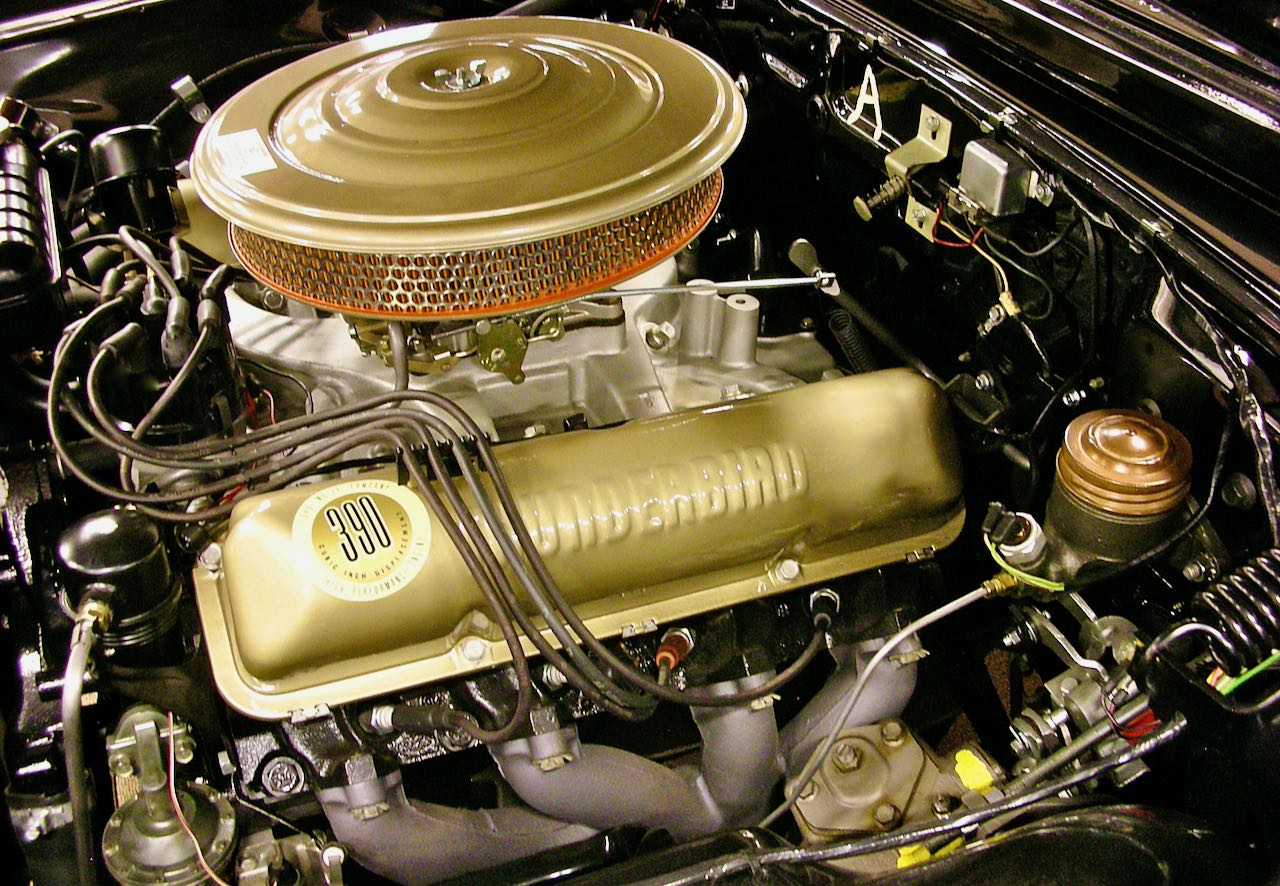 Starliners made a great showing on the NASCAR and USAC high-speed ovals and the Daytona Beach Speed Trials. Jim Rathman successfully raced a Zecol-Lubaid-sponsored #43 Starliner. Zecol-Lubaid Racing Team’s Don White, in a stock 375-horsepower Starliner passenger car with a blueprinted engine and roll bar prepped for running top end, clocked 159.32 mph, set a new Flying-Mile record.
Starliners made a great showing on the NASCAR and USAC high-speed ovals and the Daytona Beach Speed Trials. Jim Rathman successfully raced a Zecol-Lubaid-sponsored #43 Starliner. Zecol-Lubaid Racing Team’s Don White, in a stock 375-horsepower Starliner passenger car with a blueprinted engine and roll bar prepped for running top end, clocked 159.32 mph, set a new Flying-Mile record.
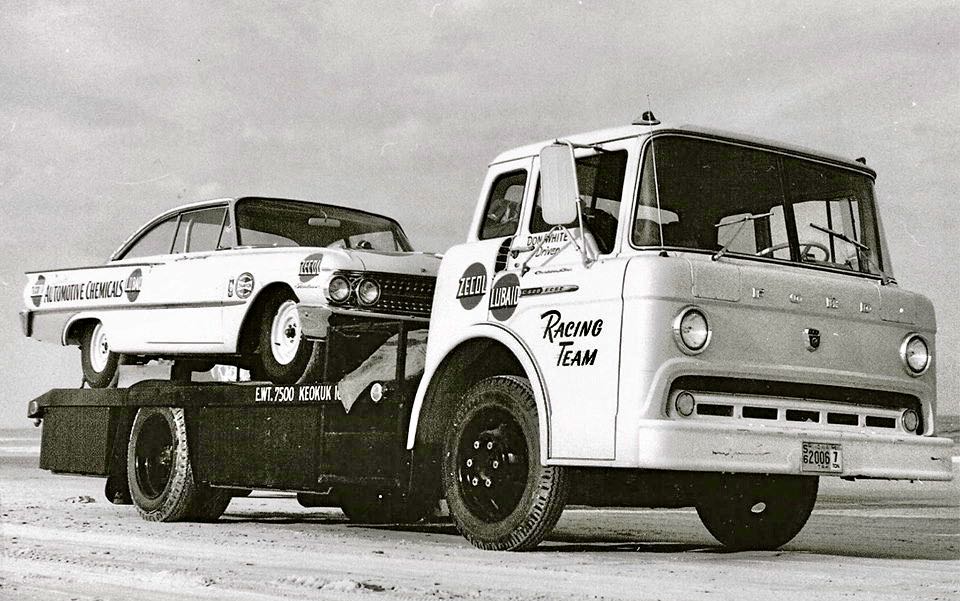 Ford’s official representation in stock car racing was Holman & Moody, owned by John Holman and Ralph Moody. They had bought out the old DePaolo Engineering operation that fronted for Ford from 1955 to the signing of the 1957 AMA ban. Fred Lorenzen, running a Holman & Moody Ford, won Martinsville on April 19, Darlington on May 6, and Atlanta on July 9. Fords won seven Grand National races in 1961, including three of the eight super-speedway events. Holman & Moody was also building engines for the Woods Brothers #21 car and grinding camshafts for many of the teams.
Ford’s official representation in stock car racing was Holman & Moody, owned by John Holman and Ralph Moody. They had bought out the old DePaolo Engineering operation that fronted for Ford from 1955 to the signing of the 1957 AMA ban. Fred Lorenzen, running a Holman & Moody Ford, won Martinsville on April 19, Darlington on May 6, and Atlanta on July 9. Fords won seven Grand National races in 1961, including three of the eight super-speedway events. Holman & Moody was also building engines for the Woods Brothers #21 car and grinding camshafts for many of the teams.
Thanks to the ’61 FORD SHOWROOM SUPERCAR, Dearborn was well on its way to cementing its reputation as a winner on high-speed ovals and quarter-mile drag strips, and in the marketing of high-performance passenger cars. Bragging about it had to wait until 1962, when Henry Ford announced that Ford would no longer abide by the AMA ban.
For more information about the ’61 FORD SHOWROOM SUPERCAR, and the complete Ford lineup for 1961, please visit OVER-DRIVE magazine @ https://over-drive-magazine.com/2025/08/10/1961-ford-full-size-cars-fact-sheet/
